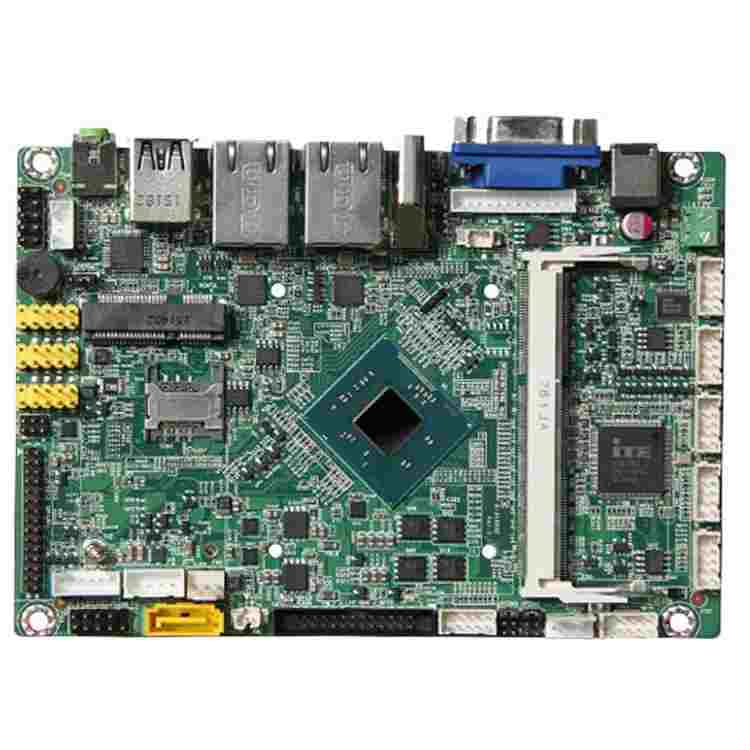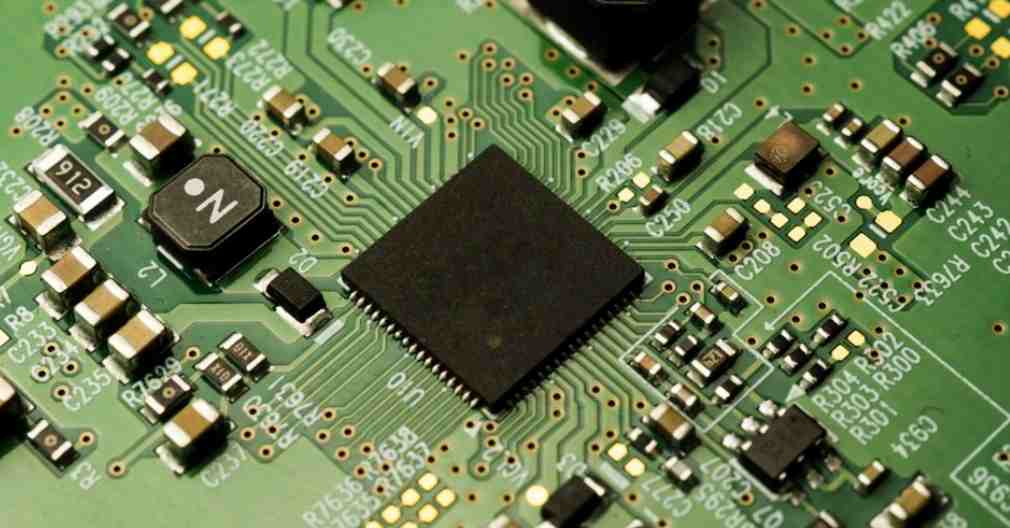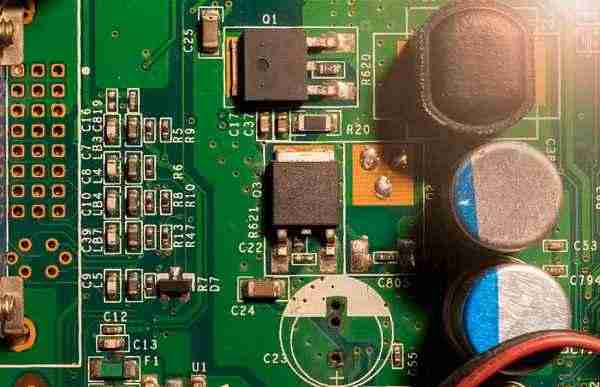
SMT patch processing basic introduction
With high assembly density, small size and light weight of electronic products, the volume and weight of patch components are only about 1/10 of the traditional plug-in components. Generally, after SMT is adopted, the volume of electronic products will be reduced by 40%~60% and the weight will be reduced by 60%~80%.
High reliability and strong vibration resistance. Low defect rate of solder joint.
Good high frequency characteristics. Electromagnetic and radio frequency interference is reduced.
Easy to realize automation, improve production efficiency. Reduce the cost by 30%~50%. Save materials, energy, equipment, manpower, time, etc.
◆ Why use surface mount technology (SMT)?
Electronic products pursue miniaturization, previously used punch plug-in components can not be reduced.
Electronic products function more complete, the integrated circuit (IC) used has no perforated components, especially large scale, high integration IC, have to use surface patch components.
Product mass, production automation, factory to low cost and high output, produce quality products to meet customer needs and strengthen market competitiveness.
The development of electronic components, the development of integrated circuits (IC), the multiple applications of semiconductor materials.
Electronic science and technology revolution is imperative, chasing international trends.
Why is no cleaning process used in surface mounting technology?
The waste water produced after product cleaning in the production process brings pollution of water quality, earth and even animals and plants.
In addition to water cleaning, the use of organic solvents containing chlorofluorocarbons (CFCS & HCFCS) for cleaning also causes pollution and damage to the air and atmosphere.
The residue of cleaning agent will cause corrosion on the machine board and seriously affect the quality of the product.
Reduce cleaning operation and machine maintenance costs.
No cleaning can reduce the group of plates
A) Injuries caused during movement and cleaning. There are still some components that cannot be cleaned.
The flux residue has been controlled and can be used in accordance with the product appearance requirements to avoid the problem of visual inspection of cleaning status.
The electrical properties of the residual flux have been continuously modified to avoid leakage of electricity from the finished product, which could lead to any injury.
The wash-free process has passed a number of international safety tests, proving that the chemicals in the flux are stable and non-corrosive.

◆ Defect analysis of reflow welding:
Solder Balls: Solder balls.
1. The silk screen hole is not in position with the pad, and the printing is not accurate, so that the solder paste stains the PCB. 2. Tin paste is exposed to too much in the oxidizing environment and too much water in the air.
3, heating is not accurate, too slow and uneven
4. The heating rate is too fast and the preheating interval is too long.
5. The paste dries too fast.
6. Insufficient flux activity.
7. Too much small tin powder.
8. Improper flux volatility in the reflux process.
The acceptance standard for tin balls is: when the distance between the pad or printed wire is 0.13mm, the diameter of tin balls shall not exceed 0.13mm, or there shall not be more than five tin balls within a 600mm square range.
Tin Bridging: Generally speaking, the factors that cause tin bridging are because the solder paste is too thin. SMT patch processing includes low metal or solid content in the solder paste, low shake solubility, easy squeezing of the solder paste, solder paste particles too large, and flux surface tension too small. Too much solder paste on the pad, too high reflux temperature peak.
Cause: Open
1. The amount of tin paste is not enough.
2. The coplanar nature of component pins is not enough.
3, wet enough tin (not enough melting, poor liquidity), tin paste is too thin cause tin loss.
4, pin tin (like rushes) or nearby with a connecting hole.
Pin coplanicity is particularly important for close - and ultra-close - spaced pin elements, and one solution is to pre-tin the pad. Pin tin suction can be prevented by slowing down the heating rate and by heating the underside more and the top less. Pin tin absorption can also be reduced by a flux with a slower wetting rate and a higher active temperature, or by a solder paste with different proportions of Sn/Pb to block melting.
SMT related technical composition
Design and manufacture technology of electronic components and integrated circuits
Circuit design technology of electronic products
Manufacturing technology of circuit board
Design and manufacture technology of automatic mounting equipment
Circuit assembly manufacturing technology
Development and production technology of auxiliary materials used in assembly manufacturing
◆ Patch machine:
Gantry: Content from :www.pcba-smt.cn
Component feeder and substrate (PCB) are fixed. The sticker head (installed with a plurality of vacuum suction nozzle) moves back and forth between the feeder and substrate, takes out the component from the feeder, adjusts the position and direction of the component, and then sticks it on the substrate. Because the sticker head is mounted on the X/Y coordinate moving beam of the arch type, so named.
Method of adjusting the position and direction of components:
1), mechanical alignment adjustment position, nozzle rotation adjustment direction, this method can achieve limited accuracy, later models are no longer used.
2) Laser recognition, X/Y coordinate system adjustment position, nozzle rotation adjustment direction, this method can realize the identification in the course of flight, but can not be used in the ball grid to list the element BGA.
3) Camera recognition, X/Y coordinate system adjustment position, suction nozzle rotation adjustment direction, generally fixed camera, stick the head flying over the camera, imaging recognition, a little delay than laser recognition, but can recognize any component, there are also camera recognition system to realize recognition during the flight, there are other sacrifices in mechanical structure.
In this form, the speed is limited by the long distance that the sticker head moves back and forth. OEM OEM is now generally using multiple vacuum suction nozzle at the same time to take materials (up to ten) and the use of two-beam system to improve the speed, that is, the sticker head on one beam in the material at the same time, the sticker head on the other beam to put components, the speed is almost twice as fast as the single-beam system. However, in practical application, it is difficult to achieve the conditions of taking materials at the same time, and different types of components need to be replaced with different vacuum suction nozzle, which has a time delay.
The advantages of this type of model are: the system structure is simple, can achieve high precision, suitable for various sizes, shapes of components, even special-shaped components, the feeder has ribbon, tubular, tray form. Suitable for small and medium-sized batch production, can also be used for multiple units combined for mass production.
Turret type:
The component feeder is placed on a single coordinate moving skip car, the substrate (PCB) is placed on a X/Y coordinate system moving workbench, and the sticker head is installed on a turret. When working, the skip car moves the component feeder to the material taking position, the vacuum suction nozzle on the patch head takes the component at the material taking position, and rotates through the turret to the patch position (180 degrees from the material taking position). After adjusting the position and direction of the component in the rotation process, the component is attached to the substrate.
Method of adjusting the position and direction of components:
1), mechanical alignment adjustment position, nozzle rotation adjustment direction, this method can achieve limited accuracy, later models are no longer used.
2) Camera recognition, X/Y coordinate system adjustment position, suction nozzle self-rotation adjustment direction, camera fixed, paste head flying across the camera for imaging recognition.
Generally, the turret is installed with more than ten to twenty sticker heads, each sticker head installed 2~4 vacuum suction nozzle (earlier models) to 5~6 vacuum suction nozzle (current models). Because of the characteristics of the turret, the action is subtle, select change nozzle, feed moving in place, take components, component recognition, Angle adjustment, table movement (including position adjustment), put components and other actions can be completed in the same time cycle, so the real sense of high speed. The current fastest time period is 0.08~0.10 seconds for a component.
This model is superior in speed, suitable for mass production, but it can only use banded packaging components, if it is dense foot, large integrated circuit (IC), only pallet packaging, it can not be completed, so it also depends on other models to cooperate. The equipment is complex and expensive, costing US$500,000 for the latest model, more than three times as much as the arch model.
kingford focuses on PCBA incoming material processing smt patch processing -DIP plug-in processing - post-welding - functional testing - three anti-coating coating -PCBA OEM OEM -ODM customized development - component purchasing and other one-stop manufacturing manufacturers.









